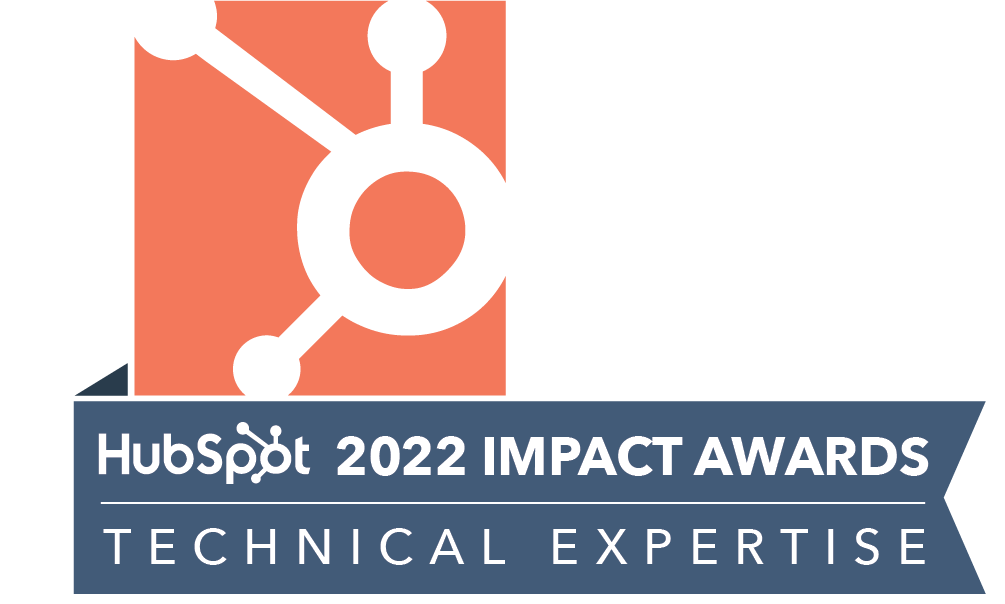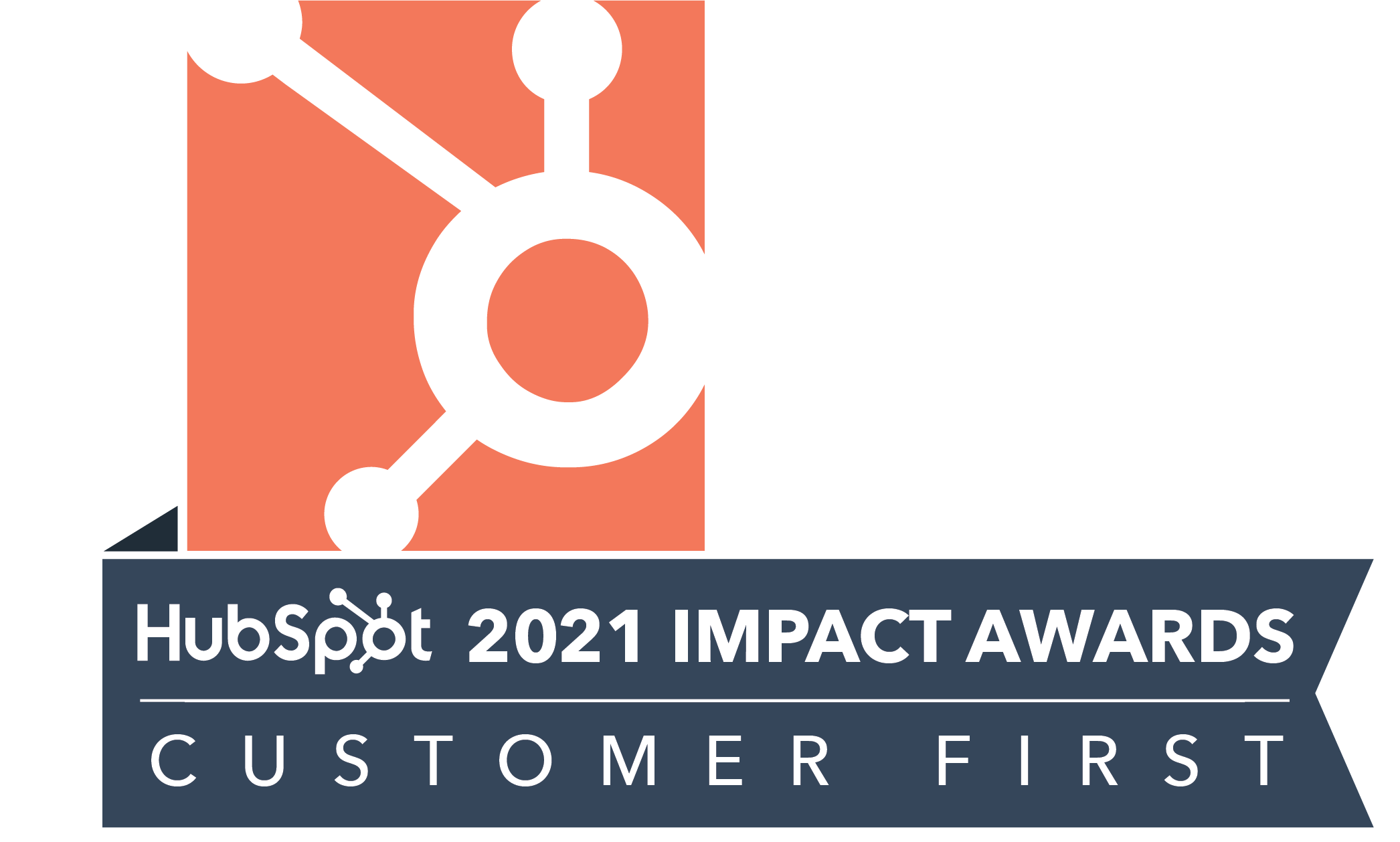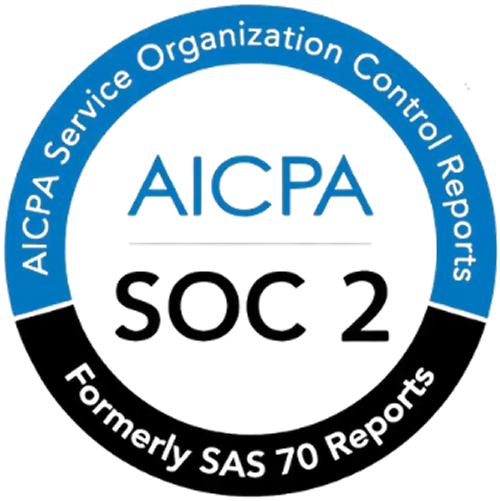Are marketing budgets really shrinking? How can CMOs select the right channels to invest in? What is trans-media storytelling? Finally, how much to invest in AI and how to still stand out in a sea of AI-generated marketing.
Find out all that and more right here👇👇
Listen on Spotify >>
Panelists:
-
Prof. Subin Sudhir, Associate Professor and Chair, Executive Education Programmes at Indian Institute of Management, Indore
-
Adarsh Noronha, HubSpot Country Head, India & SAARRC
-
Suma EP, Co-founder, Niswey
Timestamps
Skip to the section that appeals to you the most
- 00:00 - Martech CXO Dialogues - Intro and panelist introduction
- 01:40 - Shrinking marketing budgets and its implications for CMOs
- 09:48 - Why tech-enabled lead nurturing and fixing attribution are key factors to showcase marketing ROI
- 18:20 - Your brand will stand out only with AI + human element
- 27:48 - Trans-media storytelling - what is it and why CMOs should invest in it
- 30:50 - How do you build and justify a tech-powered marketing budget
- 33:29 - The 3 Cs for CMOs who make an impact
- 35:39 - How to ensure that martech implementation actually delivers results
- 43:54 - Tech vs team - how can CMOs strike the right balance of investment between these two
- 50:20 - Final wrap-up tips and tricks
Discussion Summary
Suma EP: We are happy to have Professor Subin Sudhir from IIM Indore here and ofcourse there's Addy from HubSpot. And today's topic, we are going to delve into the idea of how can the CMOs work on getting a better budget for their, you know, requirements this year. How can CMOs work towards that?
So that's the topic of discussion today and I would like to start with a data point which says that 71% of CMOs think that they don't have enough budget to execute their full strategy. This is from Gartner from last year. I'm just wanting to know if this is true this year too and if it is true for Indian CMOs as well.
Adarsh: I'm keen to hear from Professor his initial thoughts before a pitch.
Prof. Subin: I believe this holds true for all CMOs because they often possess a salesperson mindset. CMOs, being sales-oriented individuals, always strive to exceed expectations. One approach they adopt to create a perception of maximum effort is by identifying budgetary constraints or limitations that prevent them from achieving everything they desire. This is a common topic of conversation among CMOs during informal discussions with me.
However, it is important to acknowledge that we are currently in a highly dynamic space. Many organizations are experiencing a digital divide, particularly among CMOs and senior executives who come from the pre-digital era. While they possess a deep understanding of consumers, channels, and industry operations, they may lack expertise in marketing technology and AI applications. This creates a need among these senior executives to invest in various fronts that offer potential opportunities. Consequently, CMOs may perceive a lack of resources to dedicate to all the activities they desire.
Moreover, it is important to acknowledge the significant changes that the marketing function in organizations has undergone over the past few decades in terms of embracing technology. It all began with the emergence of CRM, where numerous organizations adopted it at an organizational level. Additionally, ERP, DSS, and hrms systems were also introduced, resulting in a substantial amount of automation. However, the implementation of these sophisticated CRM solutions often proved to be costly for many organizations, and they struggled to achieve a return on investment even after a decade of implementation. Consequently, this created a sense of caution within organizations, as they realized that spending recklessly may not yield worthwhile results. As a result, CMOs are now expected to defend their budget and provide justifications for the expected return on investment. Furthermore, organizations are increasingly shifting towards a Performance Marketing philosophy. Consequently, CMOs are compelled to work with limited budgets, which often fall short of their expectations, to execute their campaigns and other initiatives. This is a common challenge faced by CMOs worldwide, particularly in India.
Adarsh: Professor, your insights have provided an excellent foundation for this discussion. It's fascinating to explore the various challenges that marketers face when it comes to their portfolios and how they compare to their counterparts in different departments. As we delve into the topic of budgets, it's important to recognize that our perception of what we have in comparison to previous years is influenced by the industry we belong to and its direction. Factors such as geographical location, like being in Germany compared to the UK or emerging markets like LATAM and India, contribute to the economies of scale that shape our budgetary expectations.
If you're in the consumer goods industry, for example, during the later part of 2023 or the beginning of 2024, you may suddenly find yourself with a surplus in your budget compared to a fintech counterpart. This relativity is highly significant when it comes to budget allocation. In my opinion, the crucial aspect is the role of technology. Professor, you hit the nail on the head when you mentioned the immense pressure to achieve a ROI from your investments. This scrutiny was particularly intense during the peak of the COVID-19 pandemic, when everyone was embracing digital transformation as the key to growth and global expansion. Funding was poured into martech and digital advertising, and it seemed like spending more was the way to go. However, as time went on, and the tailwinds of the pandemic subsided, the headwinds of reality hit. Questions arose regarding whether the promised growth could be sustained and if the investments made were truly worth it.
That's where I believe a certain level of scrutiny and careful consideration has entered into budgeting, and it's actually a positive and beneficial development. With the rise of AI, particularly Generative AI, and its ability to accomplish more with fewer resources, this has become the new mantra. And if that's the case, I think most CMOs would agree that their budgets are being allocated to a plethora of products. In the rush to get everything done quickly, they may have inadvertently pieced together a complex platform that requires excessive spending. There are options available to reduce costs and create a connected and simplified experience, which can have a significant impact on the success of their campaigns.
Prof. Subin: I believe it is also influenced by the competitive nature of the industry. Recently, I had a discussion with a senior executive from a general insurance firm in India. One of the challenges that many executives face is the focus on a specific channel for consumer acquisition, particularly the Google search engine marketing channel. While other channels are useful as well, this particular channel is where most consumers show their intent and begin their journey towards obtaining insurance.
I'm referring specifically to general insurance, such as motor insurance, but this also applies to term insurance and health insurance. The amount of money involved in bidding for keywords and running campaigns can make this channel less profitable when considering the overall customer acquisition cost.
However, CEOs may not be able to decide against spending money on this channel because it would give their competitors an advantage in acquiring customers at a cost-effective rate. This hyper-competitive environment pushes CMOs to be less creative in terms of creating organic campaigns and generating engagement without heavy spending. Although some companies have been forced to create organic campaigns that require less media buying, the competition in the industry often compels CMOs to spend money even if the results may not be fruitful. The focus is on acquiring customers and keeping them with their brand rather than losing them to a competitor.
Suma: Addy, I would love to hear your input on this matter. With Performance Marketing, we are generating a significant number of leads, many of whom are ready to make a purchase. This places us at the bottom of the funnel. However, there is a large portion of these leads that may not convert. In such cases, does nurturing still hold its value? Will it be effective? I am curious to hear your thoughts on this.
Adarsh: Yeah. As the professor mentioned earlier, there are times when scrutiny is high regarding where marketers allocate their spending throughout the entire customer journey. It's no longer sufficient to stop at acquiring a lead; the focus now shifts to determining if the lead is a good fit or a bad fit. This filtration process is crucial in nurturing and retaining the right leads, so as not to burden the sales team with unnecessary engagement. By leveraging automation, marketers can effectively nurture potential customers until they are ready to make a purchase, ensuring a seamless transition from marketing to sales. This means that the role of a marketer extends beyond just the top or middle of the funnel; it carries on until sales closes the deal and even beyond, to foster customer loyalty and advocacy.
Returning to your question, Suma, nurturing a lead at the top of the funnel remains paramount. While ad tech and martech tools offer sophisticated capabilities for generating content and campaigns, it's essential to stand out from the crowd and position oneself as a thought leader. This requires originality in content, products, and services, as well as the ability to leverage personalities who can act as brand ambassadors. Marketers now need to move beyond a spray-and-pray approach and focus on personalization and creativity. It's no longer about quantity, but about quality and relevance.
Additionally, marketers must ensure that their lead generation efforts result in a solid pipeline, rather than a leaky bucket. This requires close collaboration between marketing and sales, with automation and workflows playing a key role in maintaining engagement until the customer is ready for a potential purchase discussion.
Ultimately, marketers are judged based on the return on investment they deliver. It's not just about how much they spend, but how much they generate in revenue. The channels, scale, and tactics employed are crucial elements of the job, but the bottom line is the impact on the company's bottom line. Nurturing leads and leveraging automation to hand off qualified prospects to the sales team is essential for maximizing the return on marketing investment and building long-term customer relationships. This is where technology plays a vital role in driving success.
Prof. Subin: In the world of budgeting, there are two levels of allocation that organizations consider. The first level involves determining how much budget should be allocated to each activity and function within the company. This includes funds for R&D projects, operational capacity development, training and development, and marketing. Unfortunately, a significant portion of the marketing budget is often determined based on a percentage of sales, which can limit flexibility.
Once the overall marketing budget is set, the CMO is faced with the task of allocating these funds across various campaigns. This allocation process can be complex, and there are typically two approaches taken. One common approach is known as the heuristic model, which involves setting a budget for a particular campaign and then evaluating the return on ad spend (ROAS) generated from that campaign. This evaluation is then compared to the ROAS of other campaigns to make adjustments and decisions for the future. While this approach is widely used due to its simplicity, it often overlooks historical data and the attribution of each campaign.
To optimize budget allocation, marketers should consider leveraging technology and data analysis. With the rise of artificial intelligence (AI) and predictive analytics, historical data can be utilized to create more efficient budget models. By analyzing the entire customer journey and understanding the impact of each touchpoint, marketers can make data-driven decisions on where to allocate their budgets effectively. Additionally, the challenge of attribution in the digital marketing space must be addressed. With consumers engaging with multiple channels, it becomes crucial to determine which platforms deserve more investment and credit.
However, integrating and analyzing all this data can be challenging due to the lack of transparency and collaboration between ad exchanges and platforms. As a result, marketers must focus on streamlining their processes, leveraging consumer journey insights, and assigning responsibilities for each stage of the funnel. This approach will ensure accountability and optimization, leading to improved performance and results. While a manual process is not feasible, advancements in AI and technology offer promising solutions for more efficient and effective budget allocation in marketing.
Recently, I had an interesting conversation with a concerned student who asked me, with a hint of nervousness, about the impact of AI on job opportunities in the industry. While I don't recall exactly how the topic came up, my response to the student made me reflect on it further. I assured him that AI will not eliminate jobs, but rather create a battle between those who embrace and understand AI and those who do not. Those who possess AI skills will become more efficient and effective, potentially handling multiple projects simultaneously and completing tasks quickly. On the other hand, individuals who lack AI knowledge may struggle to find relevance in the industry.
Therefore, it is crucial for individuals, particularly CMOs, to cautiously and judiciously enter the domain of technology, harnessing its power while avoiding unnecessary spending on all fronts. This battle will determine who has the advantage in utilizing AI and technology, and CMOs must position themselves on the winning side.
Adarsh: Indeed, I recently had the opportunity to participate in a podcast with my colleague from HubSpot, and we delved into the intriguing topic of job displacement due to the emergence of Gen AI. It sparked a thought-provoking discussion on the impact of innovation and how it has historically disrupted the tech world. While disruptions have often been positive, aimed at enhancing sophistication and efficiency, Gen AI is said to be a monumental innovation that has caused concern among those who do not fully comprehend its potential.
However, it is important to recognize that Gen AI is here to assist us and make us better. As the market adjusts, resources, colleges, and institutions will adapt to prepare future talents who can work alongside AI and be more efficient. This positive change will lead to improved market adoption and eliminate unnecessary fluff. It will also ensure that individuals who are innovative and intelligent receive the recognition they deserve. Ultimately, this is the path that humanity has always taken to progress forward.
Suma: I think it's pertinent to quote Dharmesh Shah at this point. He said AI will take your job but it'll give you a better one.
Adarsh: I completely agree, and I believe Dharmesh Shah has been at the forefront of adopting AI into our products and helping millions of customers grow more effectively. When we first launched, we were amazed by the capabilities of AI. It combines the best of our creativity with the collective wisdom of creativity from around the world. It's like having a treasure trove of ideas at our fingertips.
This technology has revolutionized the way we create reports and extract data. Instead of spending hours on these tasks and experiencing the stress that comes with it, we can now simply have a conversation with the system and get the information we need. It's truly unbelievable.
Despite my years of experience in the CRM world, I never imagined that I would be able to communicate with a system and receive data in the exact format I want. It's as simple as harnessing the power of AI. With the help of AI, my team can create LinkedIn posts that are indistinguishable from those of a well-trained and experienced marketer. It's like having a team of seasoned professionals working alongside us. This is the magic that AI is bringing to the table.
Prof. Subin: Furthermore, Gen AI has the potential to greatly benefit small enterprises. These organizations often struggle to access the necessary resources to produce high-quality content, and may not have the means to hire agencies for creative services. This is where Gen AI can work wonders, leveling the playing field for small businesses.
Similar to the internet revolution, which allowed organizations with limited budgets but passionate and creative individuals to compete with larger counterparts, Gen AI can be another equalizer. It enables small enterprises to create compelling content without needing to hire numerous highly skilled professionals. The introduction of Gen AI will undoubtedly provide valuable assistance to these businesses.
However, it is important to highlight another aspect. When a new communication channel emerges, there is typically a surge of attention from consumers. For instance, when television was introduced, companies that advertised on this platform experienced significant returns. The same pattern occurred with radio and internet advertising, as early adopters reaped the benefits while their competitors looked on with envy. This trend is likely to repeat itself with Gen AI.
Nevertheless, over time, consumers become more discerning. They begin to notice similarities between content generated by various AI platforms. If the human input at the foundation of the Gen AI tool is not of high quality, the content produced may lose its appeal to consumers. Thus, it is essential to maintain a human element in the process to ensure the tool remains as effective as possible. By cutting through the clutter and capturing the attention of consumers, businesses can elicit a response and convert it into a lead, ultimately leading to the desired outcome of generating revenue.
Adarsh: So, I believe that the human element will always be crucial in marketing. You have beautifully brought us back to the topic of tightening marketing budgets and how marketers can justify the need for a budget in such situations. I recently came across an article that perfectly articulated the direction the world is moving in terms of marketing and branding. It highlighted the significant changes taking place and how these changes are communicated on a wide scale.
What I mean by this is that once we become accustomed to new marketing strategies, we will develop the ability to distinguish between the good and the bad, filtering out what we truly want to see. It may take some time for us to reach this point, but past experiences have shown that eventually, we become adept at differentiating between valuable content and irrelevant noise. In this process, brands must strive for originality and ambassadorship, focusing on personality-driven marketing.
Brands are now shifting towards telling true stories that resonate with consumers like you and me. These stories have happened to real people, and by associating ourselves with the brand, we can feel the impact of these stories. While celebrity-led campaigns may decline in the future, they will be replaced by authentic stories from everyday influencers who have become leaders in their fields simply by using a product or service. This emerging trend is gaining favor among marketers, who are now investing in this approach.
In today's competitive landscape, everyone needs to be smarter about where they invest their resources. As Professor rightly pointed out, there is no point in investing in something that everyone else is doing. It's better to create something unique that sets you apart and attracts the attention you deserve. This involves the strategic creation of personalities that resonate with your target audience, ultimately capturing their attention and generating the desired outcomes.
The marketing landscape is constantly evolving, and it's crucial for marketers to adapt to these changes. By staying ahead of the curve and embracing new strategies that focus on originality and personal connections, brands can position themselves as winners in the market.
Prof. Subin: I also wanted to mention the insights shared by Professor Henry Jenkins, a renowned professor from the University of Southern California, who has extensively discussed the concept of transmedia storytelling. Transmedia storytelling is something that I believe all CMOS should delve deeper into.
Professor Jenkins emphasizes two crucial elements in his work. Firstly, he highlights that each communication channel has its own strengths, and it is important to leverage those strengths when utilizing them. Not all channels are suitable for the same kind of content. For example, placing a banner advertisement on YouTube would not be effective as it does not align with the nature of the platform. Transmedia storytelling involves breaking down the entire story into smaller pieces and using different pieces of content on different channels. This allows consumers to experience different aspects of the story on various channels, maximizing the impact of each channel and avoiding a one-size-fits-all approach.
Secondly, Professor Jenkins suggests bridging the gap between what is real and what is advertising. Many campaigns today actively involve consumers in the commercial itself, blurring the lines between reality and advertising. An example he shares is a campaign by a premium automotive manufacturer that showcased the capability of their vehicle's audio recognition system. Consumers could interact with the advertisement by speaking into their phones and influencing the storyline of the commercial. This creative approach engaged consumers for as long as 45 minutes, a significant achievement considering the difficulty marketers face in capturing and maintaining consumer attention.
While these innovative approaches may seem risky and unconventional, they offer the potential for significant rewards. CMOs must embrace creativity and think outside the box to set their brands apart. However, justifying the budget for such unconventional strategies can be a challenge. To address this, CMOs should focus on efficiency and effectiveness. They need to consider how to do things better with fewer resources and how to achieve new capabilities and activities that were previously unattainable. By breaking down the marketing activities into customer interaction, customer management, and internal processes, CMOs can identify the tools and technologies required to increase efficiency and effectiveness across each of these segments.
Quantifying the increase in efficiency and effectiveness in terms of cost savings is also essential. Instead of solely focusing on sales as the ultimate metric, CMOS should evaluate the cost savings achieved through AI and other technologies. This can be done by comparing the time and resources required for tasks performed by humans versus those performed by AI tools. By understanding the return on investment and the break-even point, CMOS can make informed decisions about adopting new technologies.
Lastly, the integration of tools is crucial for a successful marketing strategy. While CMOS may have various tools at their disposal, it is important to ensure that these tools work together seamlessly. Integration challenges can lead to inefficiencies and complications. Therefore, CMOS should consider the overall view of their toolset and strive for a cohesive and unified approach.
These are important considerations for CMOS to contemplate, as the marketing landscape continues to evolve. It is never too late to start embracing these aspects and staying ahead of the curve.
Adarsh: As we were discussing the importance of taking risks and thinking outside the box in marketing, it reminded me of an insightful article I read in HBR. The article highlighted three essential elements, which I found quite memorable because they all started with the letter C. The first is Clarity, which refers to having a clear understanding of the strategy, campaign, and decisions that need to be made. Without clarity, it becomes challenging to make effective choices.
The second C stands for Courage. It takes courage to make tough decisions, ask difficult questions, and take a chance on unconventional ideas. It's important for marketers to have the courage to question the effectiveness of their strategies and investments, and to explore new, uncharted territories.
Lastly, the third C is Connection. Marketing is no longer a solitary endeavor solely under the purview of the CMO. Success in today's landscape requires collaboration and input from various departments. By fostering connections and seeking different perspectives, organizations can mitigate risks and achieve more impactful outcomes.
This concept resonates with the idea that marketing is evolving, and it requires a willingness to embrace change, take risks, and collaborate. By incorporating these three C's into their approach, marketers can position themselves for success in the ever-changing marketing landscape.
Suma: One important point I wanted to mention is the decreasing productivity of martech investments in recent years, as reported by Gartner. This raises an important question: If productivity is low, how can we justify asking for more funding for martech? The emergence of AI adds another layer of complexity to this issue. The previous methods and tools are no longer as productive as before, and the increasing complexity makes it challenging to address the situation. As the Professor mentioned, AI is now a part of the equation, further complicating matters. So, how do we navigate and find solutions to this complex landscape?
Prof. Subin: In my perspective, I believe that every tool, technology, process, and change implemented by an organization requires a certain amount of time to settle and adapt. This is especially true for AI or any new technology being introduced, as there is a learning curve involved. It's unrealistic to expect immediate peak performance after investing in these changes. It is a necessary period that organizations must endure to ensure that employees are trained and familiar with the technology, and that the right processes are in place to mitigate any risks, such as adhering to brand guidelines.
Organizations that take a slower approach, investing sufficient time in this transition process, are the ones experiencing a temporary drop in productivity. However, I believe this drop is inevitable and a natural part of the learning and adaptation process. Everyone needs time to learn and adjust to new things, and this is why we see a temporary decline.
Nevertheless, I view this as a transitional phase where organizations are experiencing these challenges. Soon enough, organizations will start reaping higher productivity from their investments as they become more proficient and comfortable with the new technologies.
Adarsh: My perspective aligns with what the Professor mentioned. We must be mindful of the cost of productivity. Just because we have inherited a plethora of systems and a large team as CMOs, it does not mean that we should continue with the status quo and hope for improvement without making any changes. We need to make informed decisions when we notice a decline in productivity and the associated costs. This could involve streamlining resources or optimizing our infrastructure.
As the Professor highlighted, the integration of multiple products can be a significant expense. There is always uncertainty about whether we will achieve maximum efficiency from such an exercise. In my experience, I have observed that people often do not fully utilize the products they have purchased due to various reasons such as timing or contractual obligations. As a result, organizations tend to work with fragmented processes that lack cohesiveness. To address this, it takes a courageous CMO to decide to reduce the number of tools and focus on a more streamlined and efficient approach. By doing so, we can not only reduce costs but also enhance productivity and output.
Furthermore, it is important to assess our teams and ensure that everyone is working on tasks that align with their strengths and expertise. By leveraging the right skills and allowing individuals to focus on their areas of expertise, we can foster creativity and collaboration, leading to greater overall productivity. This shift from a fragmented approach to a more focused and collaborative one can yield exponential results, where the whole becomes greater than the sum of its parts. It requires the courage to embrace change and challenge the status quo.
Inevitably, there will always be new challenges and advancements in technology. It is essential for leaders to be proactive in identifying and adapting to these changes. We must analyze data, anticipate problems, and take decisive actions to stay ahead in a constantly evolving market. The days of buyers being uninformed are long gone, and it is our responsibility to stay informed and understand the changing needs and behaviors of the market.
In conclusion, as leaders, we must address productivity issues and inefficiencies within our organizations. This requires making tough decisions, streamlining resources, and fostering collaboration. By adopting a proactive and adaptable approach, we can navigate the complexities of the ever-changing marketing landscape and drive impactful outcomes.
Prof. Subin: To further expand on the point you mentioned, I believe there is a need for a shift in leadership style when it comes to CMOs. Recently, I had the opportunity to engage with a group of highly experienced executives who had risen through the ranks, starting from the field and eventually reaching the CMO position. Many of them shared a common tendency to adopt a top-down approach, driven by their extensive knowledge of the market, field, consumers, and past campaigns. They felt they had seen it all.
However, it is crucial for us to acknowledge that we may now be operating in a completely different domain, one that may differ significantly from what we have experienced before. This realization calls for a process of unlearning and a deeper understanding of the entire ecosystem, particularly for senior executives. In fact, I believe that the younger, tech-savvy members of our teams, who belong to the digital native generation, may possess a better understanding of technology and its application than the CMOs themselves.
This realization emphasizes the importance of empowering our teams, especially the younger members, to contribute new ideas and engage in collaborative brainstorming sessions. By doing so, we can leverage their fresh perspectives and expertise to improve our strategies and drive better results. This inclusive and participative culture should be fostered within marketing organizations, allowing everyone to feel like an integral part of the transition. It is no longer viable for the CMO to simply issue orders for others to follow; instead, a more democratic approach that encourages bottom-up idea generation should be embraced. This shift in leadership style can greatly benefit organizations and facilitate their adaptation to the ever-changing landscape of marketing in the digital age.
Suma: This brings me to my next question. It seems that there is a pattern emerging where CMOs are looking to increase their spending on martech, but at the same time, they are considering decreasing their investments in their teams and resources. This is a trend that has been highlighted by Gartner. Additionally, the complexity of martech is increasing, requiring a collaboration between marketing and IT to work together as a cohesive unit. This poses a challenge for CMOs, especially with the emergence of a digitally native generation that excels in creativity but may lack the same level of expertise in technology. This adds another layer of complexity for CMOs, as they need to find a way to bridge this gap and leverage the strengths of their team members. Without these digitally native individuals, CMOs may face difficulties in navigating the complexities of the ever-changing marketing landscape. What are your thoughts on this?
Prof. Subin: In my perspective, it's similar to studying a control system in engineering. We often analyze how an input affects the movement of an actuator and use feedback mechanisms to bring it back to a stable state. This concept applies to the marketing world as well, where there will always be a period of oscillation before reaching a stable outcome.
When it comes to investments in technology and resources, there will be successes and failures. This is where the anchoring and adjusting model comes into play. Initially, organizations may invest heavily in technology and reduce their reliance on human resources. However, as time passes, they may realize the need for certain skills and expertise that can only be provided by people. Instead of letting go of employees, CEOs should focus on training and equipping them for future responsibilities that may arise. This proactive approach ensures that the team is prepared to adapt to future challenges.
In this transitional phase, CMOs should plan for the capabilities they need in their teams. For instance, individuals who excel creatively may need to enhance their technological skills, while those who are technically proficient may benefit from complementary creative skills. By taking a holistic approach to skill development, CMOs can effectively navigate the complexities of the ever-changing marketing landscape.
In summary, the process of investing in technology and resources will involve some trial and error. Organizations need to embrace this oscillation and recognize the need for both technology and human resources. By empowering and equipping their teams with the right skills, CMOs can ensure a smooth transition and drive impactful outcomes.
Adarsh: I completely agree with the Professor's perspective on this matter. There is indeed a noticeable trend, especially since early last year, of organizations worldwide implementing layoffs. This can be attributed to a lack of foresight and an assumption that the current growth and favorable conditions will continue indefinitely. However, businesses must recognize potential headwinds and adapt accordingly.
The market has become more stringent and competitive, with many highly skilled individuals finding themselves without a role in their organizations. The decision to let go of employees often stems from a lack of available positions, uncertainty about their role within the company, or an excess of resources that hinders efficient business operations. While these reasons are valid and driven by the need for profitability, it is important for leaders, such as CEOs and CMOs, to approach these decisions thoughtfully.
A successful leader should be able to drive their team with a clear vision and an understanding of the bigger picture. They should possess the ability to identify opportunities and explore uncharted territories. I recently had a conversation with a customer in the fintech industry who initially considered dismissing a group of interns. However, these interns, who were fresh graduates with a background in data research and analysis, proved their worth by providing valuable insights and even starting two new business units based on their findings. This demonstrates the potential for employees, even those who may be perceived as lacking experience, to contribute significantly to the growth and success of a company.
While it may be easy to let go of people or abandon certain strategies, an effective leader should have the ability to recognize the potential in individuals and empower them to drive the business forward in new and innovative ways. This entrepreneurial spirit is essential, especially in the ever-changing landscape of marketing, where branding and the pursuit of brands are evolving. By collaborating with the younger generation, who are adept at leveraging technology and martech tools, businesses can uncover unique opportunities that may pave the way for others to follow.
In conclusion, the decision to decrease investments in resources and increase spending on martech should be approached with caution and a long-term perspective. Leaders should consider the value that each individual brings to the table and explore ways to develop their skills and adapt them to future responsibilities. By doing so, organizations can navigate the complexities of the marketing landscape and drive impactful outcomes.
Suma: Now, let's delve into some final recommendations on how CMOs can secure more budget to fully execute their strategy-building models.
Prof. Subin: I suggest that CMOs should make a strong effort to advocate for larger budgets, even though it may not be an easy task. The adoption of AI is not limited to CMOs alone; every department within an organization recognizes the potential of technology, particularly ML and AI-driven tools. As a result, there is a growing need for substantial budgets across all functions. CMOs should collaborate with the individuals responsible for digital transformation within their organizations, as they are already working towards comprehensive technological advancements.
While CMOs are aware of the numerous opportunities presented by generative AI and other tools, they should also have a broader vision of how these tools can specifically benefit their industry, segment, funnel, and overall business operations, including the size of their team. CMOS must focus on increasing efficiency and effectiveness and quantify these improvements to justify the allocation of budgets. They should strive to arrive at a logical conclusion, determining when their organization can break even with the investments made.
CMOS need to exercise patience when awaiting returns on their investments. There may be a slight delay between the installation, implementation, or introduction of new technology or tools and their productivity. Therefore, it is crucial to remain patient during this transitional period. Additionally, CMOs should be open to unlearning old practices and acquiring new skills and tools themselves. By doing so, they can gain a comprehensive understanding of the big picture and take the lead in driving transformation within their organizations.
It is essential to remember that competitors will quickly adopt this wave of technology. In marketing strategy classes, we often emphasize that all competitors will react at this juncture. I firmly believe that the competitive response will revolve around technology adoption rather than price wars or flashy campaigns. Technology is undoubtedly the future of competition for most industries. Therefore, CMOs must take charge and spearhead the transformation within their organizations.
Ultimately, return on investment (ROI) remains paramount in all endeavors. CMOs should keep this in mind as they navigate the complex landscape of technology and resource allocation.
Adarsh: That was an incredible insight, Professor. I believe our audience will find it so valuable that they'll want to take notes while listening to you. From my perspective, it's a more traditional approach, where CMOs should utilize benchmarks to make a compelling case for their investments. Understanding the industry you're in and its current market trajectory is crucial for leveraging benchmarks from peers and other sources.
Additionally, I would encourage CMOs not to overlook the importance of the marketing sourced pipeline. It's a goldmine of opportunities. As we discussed earlier, nurturing leads through the sales cycle and beyond is vital. While this may seem like a traditional approach, it's something you've been doing and should continue emphasizing. However, it's essential to avoid portraying marketing as just a cost center. Marketing should align closely with sales and become a profit center. It's no longer sufficient to view marketing as a siloed cost center. Instead, it's a powerful combination of sales and marketing that generates revenue. Breaking this myth is crucial.
Furthermore, marketing your marketing is crucial. Regularly communicating with executives and peers is essential. Showcasing your achievements and demonstrating how they align with the organization's goals is vital. It's important to remember that if you don't promote yourself internally, it will be challenging to effectively market externally. So, showcase the innovation and results you're generating and make a strong case for yourself. Remember, if you don't advocate for yourself, you won't receive the recognition you deserve.
Suma: In one specific case, our client was actively conducting community webinars and faced internal scrutiny regarding the value of these initiatives. Some individuals questioned the overhead costs and suggested shutting them down. However, a sales representative stepped in and highlighted the significance of these webinars in establishing awareness and credibility for the company. They explained that during meetings with potential clients, many already had knowledge about the company due to the webinars they had attended. This compelling argument resulted in a collaborative effort between the marketing and sales teams to advocate for the continuation of these webinars, showcasing their impact on the company's reputation and overall success.
Do you have any more questions Addy?
Adarsh: No. It was a wonderful conversation I thoroughly enjoyed insights from Professor and yourself. It's a topic that is very relevant today and I'm sure a lot of listeners will resonate with some of the tips and tricks of the trade that Professor shared. It was a beautiful experience for me. Thank you so much for the opportunity. thank you Professor for being here. I really enjoy listening to you here
Prof. Subin: I too enjoyed interacting with both of you because mostly we don't have these kinds of conversations every day in an in in a college campus. So it was a refresher of course I keep going and talking to people, it also helps us understand the industry perspective. So definitely something that I also enjoyed.













.png)
